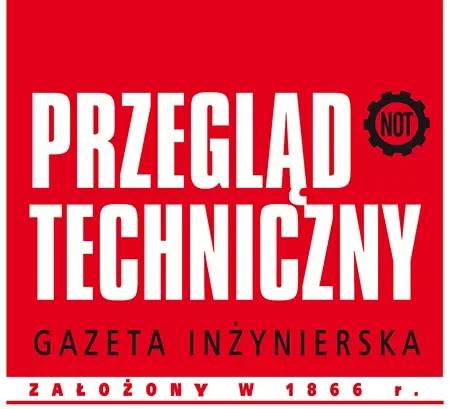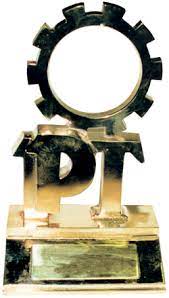In the previous episode of this series of articles on the history of electrical engineering, I told how the first generators were built and the ability to deliver a large amount of electricity to consumers was obtained, much more than the batteries previously used in the form of so-called “batteries”. Volta stacks.
However, it turned out that the fantasy and imagination of the inventors of electric receivers could not keep up with these advances in power production, and for a long time the main task of the generators was to supply electricity to the electroplating plant. The breakthrough came when electric lighting was invented and later popularized.
Previously, light was obtained from flames: archer, candle, kerosene lamp. People gasped for electric lighting when a massive fire broke out in Chicago on 08/10/1871. It was a true cataclysm: the flames completely consumed 18,000. homes, and more than 100,000. People have been made homeless. About 300 people died in the blaze. Losses were estimated at $222 million at the time. According to today’s USD value, this corresponds to billions!
Based on investigations into the spread of the fire, it was determined that the arsonist was … a cow. What’s more, it was proven that it was Patrick and Catherine O`Leary’s cow, which, wagging its tail, knocked over an oil lamp in the barn. A barn caught fire from the lamp, a house from the barn, then neighboring houses (mostly wooden), etc.
In the fall of 1871. There was drought, hot weather and strong wind in the US. Nothing more is needed to spread the fire!
After the Chicago fire, people realized that something safer than kerosene was needed to light the expanding cities. Electricity! But how do you turn electricity into light?
The first source of electric light was the electric arc. It is not known exactly who was the first to notice that if you put two electrodes in contact with each other and run a current through them, and then the electrodes are pulled apart, an electric discharge will be created between the ends of the electrodes, a few millimeters apart, which produces a very bright light and can burn as long as the current is flowing.
The man who made the greatest contribution to the development of electric lamps using the electric arc was Pavel Nikolaevich Yablochkov, a Russian engineer working mainly in Paris. One of the problems with arc lamps was that the electrodes between which the arc burned burned out relatively quickly, so without special adjustment, the distance between them increased over time – until the discharge could no longer cover such a large distance, with the result that the arc broke and the lamp went out. Yablochkov in 1875. solved this problem by using suitable carbon electrodes with a kaolin insulator between them. The lamps of his idea did not yet include a mechanism for automatic adjustment of the gap between electrodes (this was invented and applied a few years later by Ernst Siemens), but the so-called “automatic electrode spacing” was used. Yablochkov’s candles could shine continuously for 1.5 hours – which satisfied people in those days.
Yablokhkov also devised a way that multiple “candles” of his idea could be connected to a single alternator at the same time, and as a result astonished Parisians by organizing a total electric illumination of the Louvre in April 1877. At the time, 16 arc lamps were lit simultaneously. Today there are more lights on every Christmas tree, but in the late 19th century. The electrically lit Louvre was creating a sensation. It was probably the first completely electrically lit building in the world!
Yablochkov was a business success: “electric candles” were on continuous sale from 1876, they delighted at the Paris Exposition in 1878, and in the US they were taken up by the General Electric company which led to the fact that in 1880 one city (Wabash, Indiana) was illuminated entirely by lamps operating on the basis of Yablochkov’s patent.
Later, however, they were supported by incandescent light bulbs.
The fact that current flowing through a certain conductor can heat it to such a temperature that it begins to glow was covered quite early. Humphry Davy was the first to describe this phenomenon in 1801, but he treated it purely as a scientific curiosity. More “nose for business” was the Frenchman Frederic de Moleyns, who in 1841 patented an electric lamp he invented, with a platinum wire inside it that glows when exposed to a flowing current. Unfortunately, this lamp quickly burned out, as the filament glowed in the air.
The idea to enclose the filament, which glows under the flow of electricity, in a glass bulb from which the air has been removed, was patented by Joseph Wilson Swan, who obtained a patent for his light bulb in 1860. UK patent. However, a prominent American inventor, Thomas Alva Edison, has gone down in history as the inventor of the light bulb.
There are different opinions among historians about this invention. Some point to the far-reaching similarities between the design proposed by Swan and Edison’s invention. Edison could afford to be inspired (to say the least) by Swan’s invention, because the British patent had no legal force in the US. So perhaps the great inventor cynically exploited the Englishman’s ideas?
Others, however, cite the fact that the filing of the patent for the light bulb was preceded by very intensive research conducted at the research laboratory Edison created in Menlo Park, New Jersey. Researchers of Edison’s work have counted that before he patented his incandescent light bulb, he conducted more than 1,600 experiments looking for such a material for a glowing filament that would give a strong and bright light, while providing a long period of uninterrupted illumination. The solution was found on October 21, 1879. The best results came from charred cotton thread.
The invention was ready to be presented to the world. The presentation took place on New Year’s Eve 1879. Edison invited many visitors to Menlo Park, who were dazzled (literally) by the sight of 800 glowing bulbs strung in the trees. I recall that the Louvre in 1877. Sixteen candles of Yablochkov were lit, and this was already considered a huge success. So the progress made in just two years was staggering!
Ryszard Tadeusiewicz, prof. AGH





